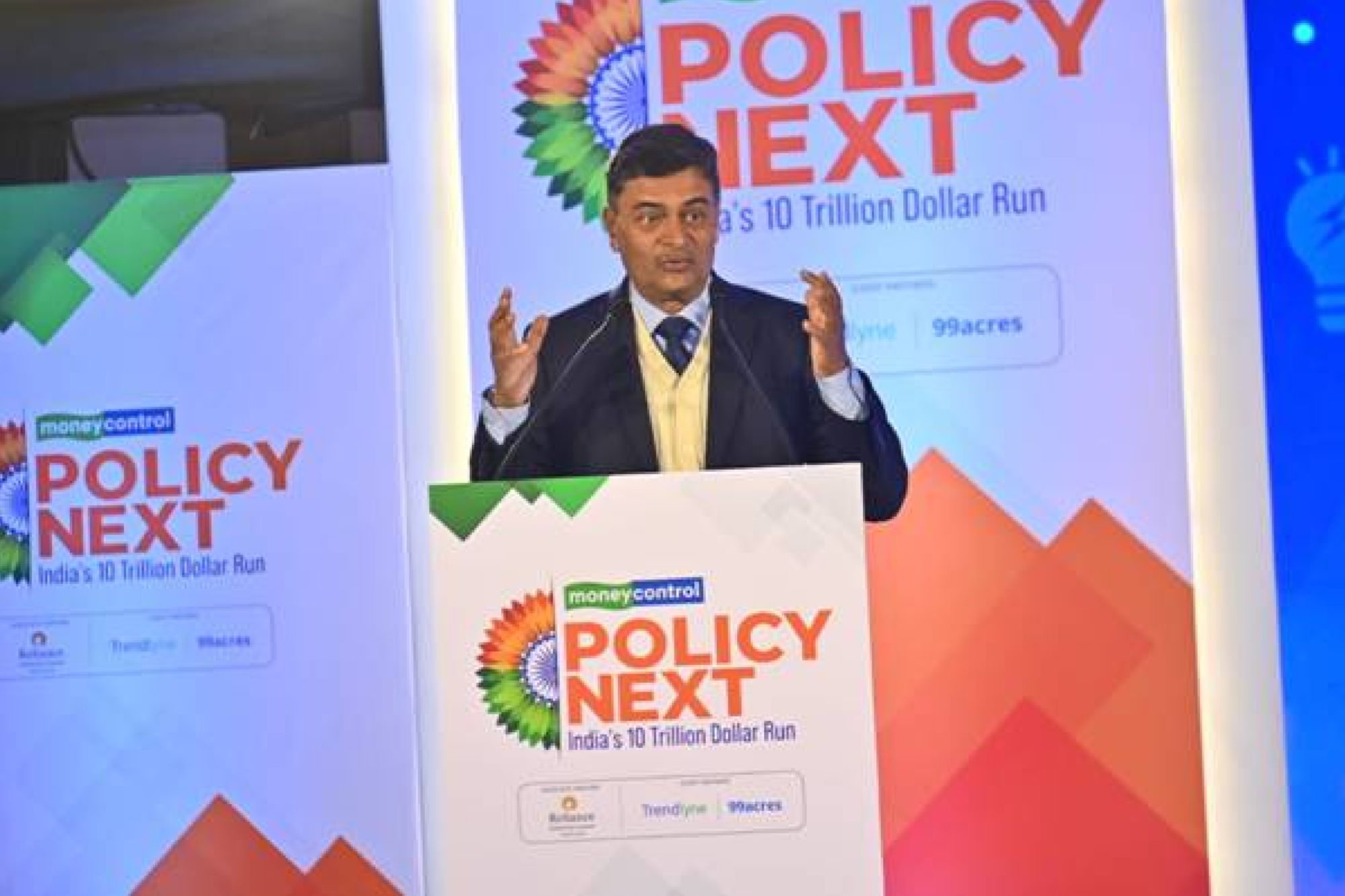Minister RK Singh unveils achievements and vision for sustainable energy future
By EPR Magazine Editorial January 19, 2024 6:25 pm IST
By EPR Magazine Editorial January 19, 2024 6:25 pm IST

A transformative journey from universal access to renewable dominance propels India’s global energy standing.
Union Minister for Power and New & Renewable Energy, RK Singh, has said that the electricity is the most crucial infrastructure for development. He was speaking at Money control’s Policy Next Summit in New Delhi on January 18, 2024. Singh noted that the absence of load shedding is a key feature differentiating developed countries from developing ones. He highlighted the significant progress in addressing power shortages in India, reducing it from around 4.5 percent in 2014 to less than 1percent at present. The Minister proudly stated that India achieved universal electricity access, connecting 29 million homes in just 19 months—a feat recognised by the International Energy Agency as the largest and fastest expansion of energy access in power sector history.
Singh delved into the details of the power capacity augmentation and the fortification of the electricity distribution system. India added 194 GW of power capacity, with renewables accounting for approximately 107 GW. The construction of 193,000 circuit km of transmission lines created the largest integrated grid globally, operating on a single frequency. The power transfer capacity surged from 36 GW to 117 GW, and significant infrastructure additions included 3,000 substations, upgrades to 4,000 substations, and the incorporation of extensive circuit km of LT and HT lines, transformers, and various equipment.
As a result of these initiatives, rural power availability increased from 12.5 hours in 2015 to about 21 hours, while urban areas now enjoy 23.8 hours of electricity. The Minister emphasized the obsolescence of generators, asserting the right to 24*7 power with penalties and compensation for gratuitous load-shedding.
Singh highlighted India’s emergence as a leader in the global energy transition, with a rapid addition of renewable capacity. India surpassed its initial target of 40 percent non-fossil-fuel capacity by 2030, currently standing at 44 percent. The new commitment aims for 50 percent by 2030, with a projected 65 percent from non-fossil sources. The Minister disclosed a total investment of around 17 lakh crores in the power sector over the last nine years, with an additional 17.5 lakh crores for capacity under construction.
In terms of renewable energy, India has 99 GW under construction and 32 GW in the bidding stage. Annual bids for 40–50 GW of renewable capacity are planned. In thermal capacity, 27 GW is under construction, 12 GW bid out, and 21 GW in various stages of survey and investigation. Hydro capacity stands at 47 GW installed, 18 GW under construction, and 13 GW in survey and investigation stages.
Singh asserted the government’s success in transforming the power sector into a viable entity, reducing AT&C losses from 27 percent to 15.41 percent. The goal is to further reduce losses to 10 percent–11 percent. Stricter enforcement of rules ensures compliance, with prosecution for violators.Addressing rising power demand, Singh noted the peak demand growth from 130 GW in 2014 to approximately 243 GW today. The estimated peak electricity demand is expected to exceed 400 GW by 2030, reflecting robust economic growth. Annual demand growth is around 10 percent, with an additional 8–10 GW daily demand compared to the previous year.
To meet this demand, Singh expressed confidence in crossing 500 GW of renewable capacity by 2030, with a focus on green hydrogen manufacturing. Despite global subsidies and protectionist measures, India maintains competitiveness in renewable energy due to the world’s cheapest renewable energy costs. Singh emphasized the government’s efforts to enhance energy storage capacity, including a Production Linked Incentive Scheme for grid-scale storage to reduce prices.
Singh concluded by highlighting India’s leadership in achieving both Nationally Determined Contributions (NDCs) and reducing emissions intensity. The government’s business-friendly regulations, such as General Network Access and Green Energy Open Access Rules, facilitate seamless connectivity and promote a conducive environment for the energy sector. Singh emphasised India’s commitment to reducing emissions across various sectors through innovative programs, positioning the nation as a frontrunner in the global drive towards sustainability.
We use cookies to personalize your experience. By continuing to visit this website you agree to our Terms & Conditions, Privacy Policy and Cookie Policy.